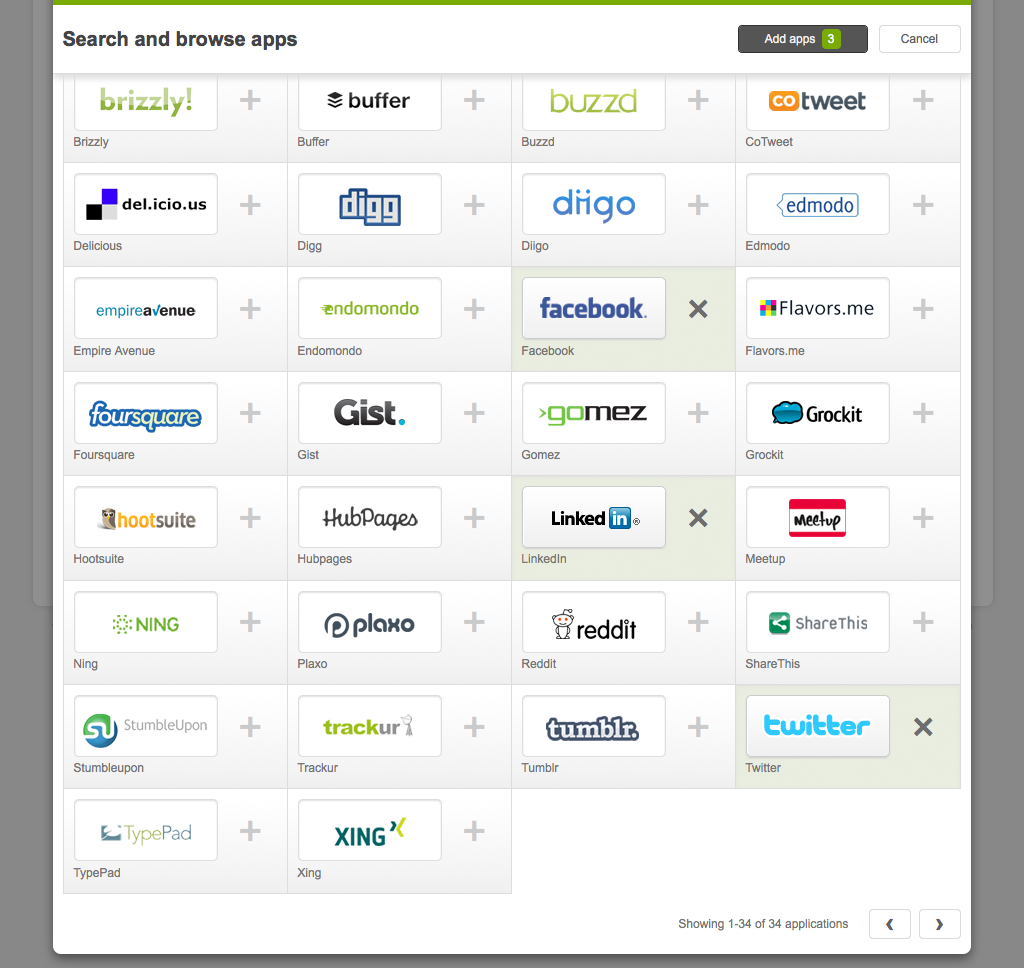Okta Self Service: Helping IT Delight End Users 1,200 Apps at a Time
Okta Application Network – Addressing the Connector Problem
One of the key challenges for IT in the identity management space has been dealing with what is known as the “connecter problem”. Basically, IT has always been challenged with managing the single sign-on integrations for all of their apps, as those apps change over time. Applications would change, connectors would break, and then every individual IT shop had to scramble to update the connector to ensure that their self-service capability remains intact. This meant that only IT organizations with enough people and dollars could really provide single sign-on to their end users.
At Okta, one of the core identity management revolutions we are providing is the Okta Application Network. We’ve grown accustomed to marketplaces – like the Apple AppStore or Android Market – to manage the apps we use in our personal lives. To date, the Okta Application Network has brought similar functionality to IT Administrators, giving them the ability to access over 1200 cloud and web applications. As part of their Okta service, IT administrators are also instantly provided with single sign-on and user management for the applications they choose.
With Okta, there are no more connectors for IT to manage as Okta does that as part of our core service. Deploying an application is as simple as selecting an app, making some simple configuration choices, and then pushing that app to their users. If the application changes, Okta senses that as part of our ongoing automated testing, makes a change once centrally, and all companies – and their users – benefit from that change immediately. This is a great example of the power of a multi-tenant cloud service. You just can’t do this with on premises software.
An Enterprise App Catalog for Your Company
As Okta was adopted across our early customer base and end user usage ramped, our IT administrators started to see the power of Okta for both IT as well as end users, and worked with us to take the Okta Application Network directly to their end users.
IT leaders from Enterasys, Pandora, AMAG Pharmaceuticals, Genomic Health and TD Williamson wanted to make it dead simple for their end users to get single sign-on to any and all of the cloud apps that they needed. They also saw the benefit to IT and the company of publishing an enterprise application catalog and providing real leadership to the business when it came to cost effectively and securely harnessing the power of the cloud.
ZDNet’s Larry Dignan picked up on one of the key benefits to IT. He explains that if IT could see that a lot of users were starting to use a particular app – they could then move quickly to negotiate better pricing and more tightly integrate that app to provide a seamless experience for end users and increased security for the business.
“In the end,” Larry explains, “The self-service option can give companies insight to what cloud apps are used the most. Okta can facilitate a cloud popularity contest. From there, enterprises can negotiate better pricing or cut subscription costs.”
And if IT hadn’t been directly involved in the purchase process, pockets of end users would continue to struggle for access to the apps they need to get their job done.
Okta Self Service
Last week we announced the addition of end user self-service capability to the Okta service – extending the Okta Application Network to end users and bringing the consumer app store model to enterprise web and cloud applications. Self Service is a big leap forward for both employees and IT departments.
For end users this means they now have direct, private access and single sign-on to over 1200 applications. For those apps that they consider part of their “personal cloud”, their usage of the application is completely anonymous within the Okta service. IT will not know who or how often they are using the application via Okta.
Check out the screenshot below, which shows what employees see when using Self Service:
For IT this gives them the ability to publish the corporate apps more broadly and facilitate end users “ordering” those apps from IT and getting secure, controlled access to the mission critical apps they need for the business.
As with other features within Okta, we give IT the flexibility to use self-service in the way that is most important for their business. They can choose to expose only the core business apps that they manage so that users can request and add just those apps. For personal use they can also expose the entire Okta Application Network to users, giving them the ability to chose from over 1200 applications. And, of course, for those IT departments that don’t want to expose self-service at all we do provide the ability for the feature to be disabled.
Our customers are excited about this new functionality and have already seen it start to transform the way their end users interact with Okta. Self Service has given our IT teams more visibility into which apps are really being used and provided them with yet another way to ensure that their cloud is always covered.
